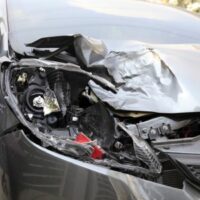Damage To A Car Doesn’t Show How Injured The People Inside May Be

When you are in a car accident, one thing that the Defendant or the insurance company for the defendant will ask about, is the damage that was done to your car.
The logic is this: People whose cars are severely damaged and mangled, likely sustained more personal injury. The damage to the car tends to substantiate the injuries that the victim says that he or she sustained. Conversely, it is highly unlikely that a car accident victim sustained much injury at all, when his or her vehicle was hardly damaged in the accident.
But does that all make any sense? Is there any science behind this? It turns out, there isn’t much science at all behind it.
Damage to Cars Isn’t Damage to Bodies
That’s because the damage our bodies sustain in a car accident often has nothing to do with the damage sustained to the car itself. There are a whole host of factors that play into how much damage a car sustains in a car accident, and often, they have nothing to do with the impact the occupants inside are experiencing.
One reason for this is the safety technology that is in our cars. With airbags everywhere, more advanced seatbelts, and other devices that are designed to cushion our bodies, a car with a lot of damage may result in little damage to the occupant at all.
Impact and Crumple Zones
But the opposite is true as well. The occupant of a vehicle can sustain serious injury, even where the car looks relatively undamaged. This is because of impact absorption.
Older cars were designed to withstand collisions. They were solid, and when they were hit by another car, there wasn’t much “give.” That means that the force of the impact from the other car, ended up being absorbed by the bodies of the occupants inside.
To prevent this from happening, modern cars now are designed with what are known as crumple zones. Crumple zones are parts of the car that are designed to crush in (or crumple) on impact. The end result is that the car looks smashed—it’s supposed to do that. But by allowing parts of the car to “smash in,” it means that the people inside the car are feeling less impact, and thus, presumably, being less injured.
Crumple zones are quite a science; certain parts of the car simply cannot crumple for safety reasons, and others need to be protected from the areas that do crumple in.
Don’t be Fooled
The overriding lesson is that it is deceptive to simply show damage to a car, and use it to argue or assume that people inside the car were more or less injured. The science is way more complex than that, and technology has made it so that property damage is an unreliable indicator of what people inside the vehicle have experienced.
Contact the Miami property damage insurance attorneys at Velasquez & Associates P.A. for help today if you have been injured in any kind of car or truck accident.
Sources:
auto.howstuffworks.com/car-driving-safety/safety-regulatory-devices/crumple-zone.htm
travelers.com/resources/auto/safe-driving/how-crumple-zones-work
